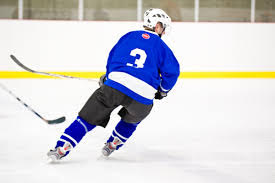In the fast-paced, hard-hitting world of ice hockey, speed and agility aren’t just traits they’re tools of dominance. Whether it’s a lightning-fast breakaway, a sharp defensive pivot, or a split-second decision in front of the net, hockey demands explosive athleticism and razor-sharp reflexes. While it might seem like some players are born with this edge, the truth is more complex: elite hockey speed and agility are carefully crafted through years of focused training, innovation, and discipline.
The Foundation: Skating Mechanics and Edge Control
Speed starts where the skate meets the ice. Skating is the most fundamental skill in hockey, yet it’s also one of the most technically demanding. To the untrained eye, a player like Connor McDavid may look like he’s simply gliding effortlessly across the ice, but beneath that fluidity is extreme precision.
Modern hockey training emphasizes edge control learning to use the inside and outside edges of the skate blades to maneuver through sharp turns and high-speed transitions. These skills are honed through drills that stress balance, ankle flexion, and knee drive. Hockey players spend countless hours with skating coaches working on stride mechanics, power generation, and posture to maximize efficiency.
Power skating sessions break down each element of the stride push-off, glide, and recovery and focus on eliminating unnecessary movement. A powerful stride with a quick recovery reduces drag and increases top-end speed without expending extra energy.
Off-Ice Training: Building the Engine
Speed on the ice comes from strength and explosiveness off of it. Hockey players are among the most explosively conditioned athletes in the world. Off-ice training includes a heavy emphasis on plyometric exercises like box jumps, jump squats, and lateral bounds to develop the fast-twitch muscle fibers responsible for acceleration.
In addition to plyometrics, players engage in Olympic lifting (such as power cleans and snatches) to develop total-body power. Core strength, often overlooked in general fitness, is crucial for maintaining stability while skating at full speed. Exercises like rotational med-ball throws and landmine twists replicate the torque used in quick pivots and puck battles.
Agility ladders, cone drills, and resistance band sprints are used to simulate game-like movement patterns, teaching the body to react quickly and move explosively in tight spaces.
Agility in Action: Small Area Games and Situational Drills
Agility isn’t just about quick feet it’s about reacting under pressure. Coaches often use small-area games to mimic the chaos of real play. These confined drills force players to maneuver in tight spaces, change direction rapidly, and make decisions on the fly. It’s one thing to be fast in a straight line; it’s another to maintain that speed and composure when navigating traffic near the crease or breaking out of a corner under pressure.
Many NHL training camps include “reaction-based drills” that challenge both mind and body. Flashing lights, unpredictable audio cues, and decision-tree style drills push athletes to react instantly, improving their cognitive processing speed in tandem with physical agility.
The Mental Side of Speed
In hockey, the mind moves just as fast as the feet. The best players aren’t just physically gifted they think quicker than their opponents. Developing this mental agility means studying game film, learning patterns, and developing an intuitive understanding of positioning and timing.
Great players anticipate the game. Wayne Gretzky, often considered the greatest of all time, famously said, “I skate to where the puck is going to be, not where it has been.” This foresight gives players a critical edge it allows them to move before others even react.
Visualization techniques are increasingly used in modern training, with players mentally rehearsing shifts, scenarios, and reactions. Combined with high-speed gameplay drills, this creates a “muscle memory of the mind” that turns fast thoughts into fast actions.
Recovery: The Hidden Weapon
Perhaps the most underappreciated component of building speed and agility is recovery. Without proper rest, the body can’t adapt or improve. Professional players now incorporate advanced recovery methods such as cryotherapy, massage therapy, compression garments, and even float tanks to accelerate muscle repair and maintain peak performance.
Sleep, hydration, and nutrition also play critical roles. A player may do everything right on the ice and in the gym, but without recovery, progress stalls.
Case Study: Connor McDavid – The Blueprint of Speed
No discussion of hockey speed and agility is complete without mentioning Connor McDavid. Widely regarded as the fastest player in the NHL, McDavid combines straight-line speed with the ability to make plays at full velocity an almost unfair advantage.
What sets McDavid apart is not just how fast he skates, but how fast he thinks while skating. His training includes highly specific drills to enhance acceleration, edge work, and multitasking with the puck. His offseason programs focus on agility, proprioception (spatial awareness), and reaction timing.
He’s not just faster than other players he’s smarter at being fast.
Speed Perfected, Not Gifted
Speed and agility in ice hockey are not accidents of birth they are refined through relentless training, smart recovery, and mental preparation. Every stride, every cut, every explosive start is the result of thousands of repetitions, each one building on the last.
Behind every highlight-reel goal or lightning-quick breakaway lies the true secret: discipline, detail, and the desire to be faster because in hockey, faster often means better.

